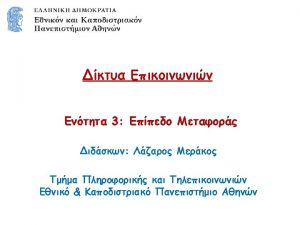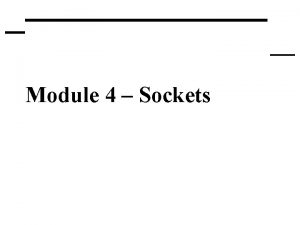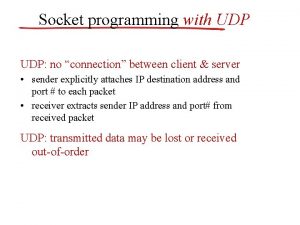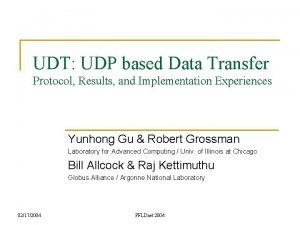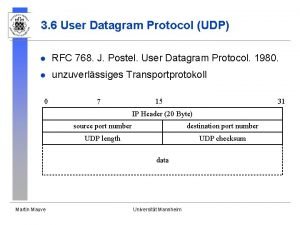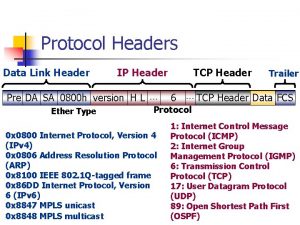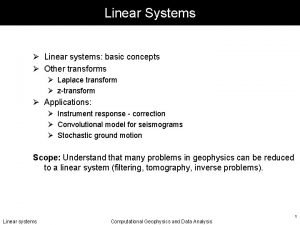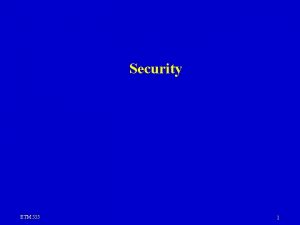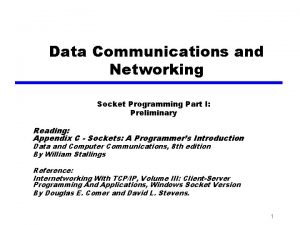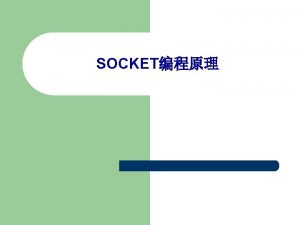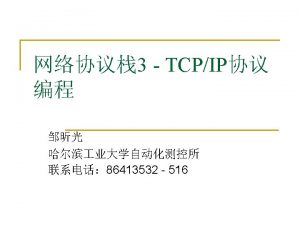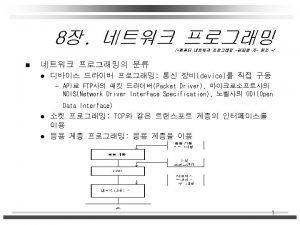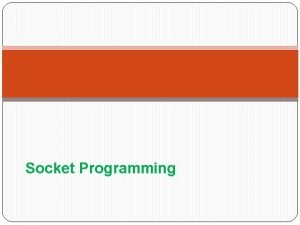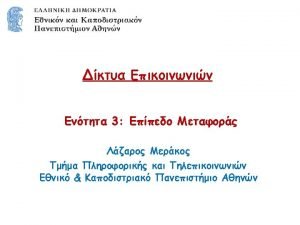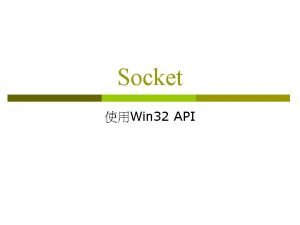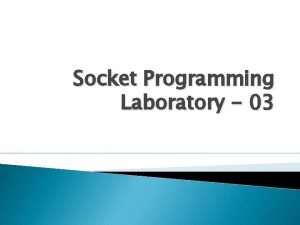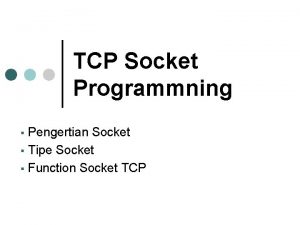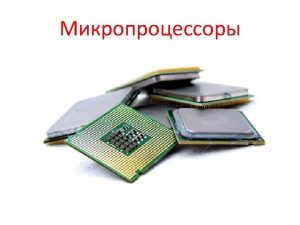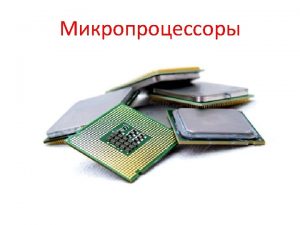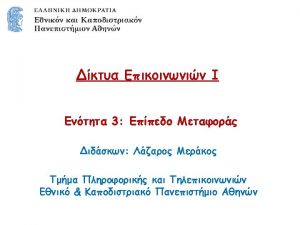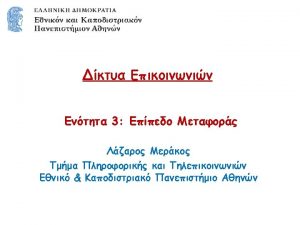UDP socket Domain AFINET Protocol SOCKDGRAM UDP SOCKSTREAM
















![UDP 클라이언트 char op[2]; if (argc != 2) { printf("Usage : %s [ipaddress]n", argv[0]); UDP 클라이언트 char op[2]; if (argc != 2) { printf("Usage : %s [ipaddress]n", argv[0]);](https://slidetodoc.com/presentation_image_h/80ecced740d8fbdc4b3ef6393caccc85/image-17.jpg)
![UDP 클라이언트 if(strncmp(msg, "quitn", 5) == 0) { break; } sscanf(msg, "%d%[^0 -9]%d", &left_num, UDP 클라이언트 if(strncmp(msg, "quitn", 5) == 0) { break; } sscanf(msg, "%d%[^0 -9]%d", &left_num,](https://slidetodoc.com/presentation_image_h/80ecced740d8fbdc4b3ef6393caccc85/image-18.jpg)






- Slides: 24








UDP 소켓 만들기 • socket 함수 이용 • Domain : AF_INET, 인터넷 영역 • Protocol • SOCK_DGRAM : UDP 통신 • SOCK_STREAM : TCP 통신 socket(AF_INET, SOCK_DGRAM, 0); 뇌를 자극하는 TCP/IP 소켓 프로그래밍_ 윤 윤상배 상배 2/56


UDP bind 함수사용하기. serveraddr. sin_family = AF_INET; serveraddr. sin_addr. s_addr = htonl(INADDR_ANY); serveraddr. sin_port = htons(1234); state = bind(sockfd, (struct sockaddr *)&serveraddr, sizeof(serveraddr)); • bind 함수의 목적은 port 번호와 기다릴 주소를 bind 하므로 • TCP 소켓의 bind와 사용방법에 차이가 없다. 뇌를 자극하는 TCP/IP 소켓 프로그래밍_ 윤 윤상배 상배 2/56






UDP 클라이언트 #define PORT_NUM 3800 #define MAXLEN 256 struct cal_data { int left_num; int right_num; char op; int result; short int error; }; int main(int argc, char **argv) { int sockfd; struct sockaddr_in addr; struct cal_data sdata, recvaddr; char msg[MAXLEN]; int left_num; int right_num; socklen_t addrlen; 뇌를 자극하는 TCP/IP 소켓 프로그래밍_ 윤 윤상배 상배 2/56
![UDP 클라이언트 char op2 if argc 2 printfUsage s ipaddressn argv0 UDP 클라이언트 char op[2]; if (argc != 2) { printf("Usage : %s [ipaddress]n", argv[0]);](https://slidetodoc.com/presentation_image_h/80ecced740d8fbdc4b3ef6393caccc85/image-17.jpg)
UDP 클라이언트 char op[2]; if (argc != 2) { printf("Usage : %s [ipaddress]n", argv[0]); return 1; } if ( (sockfd = socket(AF_INET, SOCK_DGRAM, 0)) == -1 ) { return 1; } memset((void *)&addr, 0 x 00, sizeof(addr)); addr. sin_family = AF_INET; addr. sin_addr. s_addr = inet_addr(argv[1]); addr. sin_port = htons(PORT_NUM); while(1) { printf("> "); fgets(msg, MAXLEN-1, stdin); 뇌를 자극하는 TCP/IP 소켓 프로그래밍_ 윤 윤상배 상배 2/56
![UDP 클라이언트 ifstrncmpmsg quitn 5 0 break sscanfmsg d0 9d leftnum UDP 클라이언트 if(strncmp(msg, "quitn", 5) == 0) { break; } sscanf(msg, "%d%[^0 -9]%d", &left_num,](https://slidetodoc.com/presentation_image_h/80ecced740d8fbdc4b3ef6393caccc85/image-18.jpg)
UDP 클라이언트 if(strncmp(msg, "quitn", 5) == 0) { break; } sscanf(msg, "%d%[^0 -9]%d", &left_num, op, &right_num); memset((void *)&sdata, 0 x 00, sizeof(sdata)); sdata. left_num = htonl(left_num); sdata. right_num = htonl(right_num); sdata. op = op[0]; addrlen = sizeof(addr); sendto(sockfd, (void *)&sdata, sizeof(sdata), 0, (struct sockaddr *)&addr, addrlen); recvfrom(sockfd, (void *)&sdata, sizeof(sdata), 0, (struct sockaddr *)&recvaddr, &addrlen); printf("%d %c %d = %dn", ntohl(sdata. left_num), sdata. op, ntohl(sdata. right_num), ntohl(sdata. result)); } close(sockfd); } 뇌를 자극하는 TCP/IP 소켓 프로그래밍_ 윤 윤상배 상배 2/56

UDP 서버 #define PORT_NUM 3800 #define MAXLEN 256 struct cal_data { int left_num; int right_num; char op; int result; short int error; }; int main(int argc, char **argv) { int sockfd; socklen_t addrlen; int cal_result; int left_num, right_num; struct sockaddr_in addr, cliaddr; struct cal_data rdata; 뇌를 자극하는 TCP/IP 소켓 프로그래밍_ 윤 윤상배 상배 2/56

UDP 서버 if((sockfd = socket(AF_INET, SOCK_DGRAM, 0)) == -1) { return 1; } memset((void *)&addr, 0 x 00, sizeof(addr)); addr. sin_family = AF_INET; addr. sin_addr. s_addr = htonl(INADDR_ANY); addr. sin_port = htons(PORT_NUM); addrlen = sizeof(addr); if(bind(sockfd, (struct sockaddr *)&addr, addrlen) == -1) { return 1; } while(1) { addrlen = sizeof(cliaddr); recvfrom(sockfd, (void *)&rdata, sizeof(rdata), 0, (struct sockaddr *)&cliaddr, &addrlen); 뇌를 자극하는 TCP/IP 소켓 프로그래밍_ 윤 윤상배 상배 2/56

UDP 서버 left_num = ntohl(rdata. left_num); right_num = ntohl(rdata. right_num); switch(rdata. op) { case '+': cal_result = left_num + right_num; break; case '-': cal_result = left_num - right_num; break; case '*': cal_result = left_num * right_num; break; case '/': if(right_num == 0) { rdata. error = htons(2); break; } cal_result = left_num / right_num; break; } 뇌를 자극하는 TCP/IP 소켓 프로그래밍_ 윤 윤상배 상배 2/56

UDP 서버 rdata. result=htonl(cal_result); sendto(sockfd, (void *)&rdata, sizeof(rdata), 0, (struct sockaddr *)&cliaddr, addrlen); } return 1; } 뇌를 자극하는 TCP/IP 소켓 프로그래밍_ 윤 윤상배 상배 2/56


 Sockdgram
Sockdgram Udp socket timeout
Udp socket timeout Tcp udp
Tcp udp C++ udp socket
C++ udp socket Udp broadcast c
Udp broadcast c Java client server tutorial
Java client server tutorial Udp protocol
Udp protocol Udp-based data transfer protocol
Udp-based data transfer protocol Rfc udp
Rfc udp Udp protocol
Udp protocol Domain host control protocol
Domain host control protocol Z domain to frequency domain
Z domain to frequency domain Domain specific software engineering
Domain specific software engineering Frequency domain to time domain
Frequency domain to time domain Problem domain vs knowledge domain
Problem domain vs knowledge domain Z transform of ramp function
Z transform of ramp function Z domain to frequency domain
Z domain to frequency domain S domain to z domain
S domain to z domain Domain, codomain, range
Domain, codomain, range Domain specific vs domain general
Domain specific vs domain general The designer expresses the ideas in terms related to the
The designer expresses the ideas in terms related to the Amd pga socket
Amd pga socket Secure socket funneling
Secure socket funneling Ball and socket joint
Ball and socket joint Socket data structure
Socket data structure

